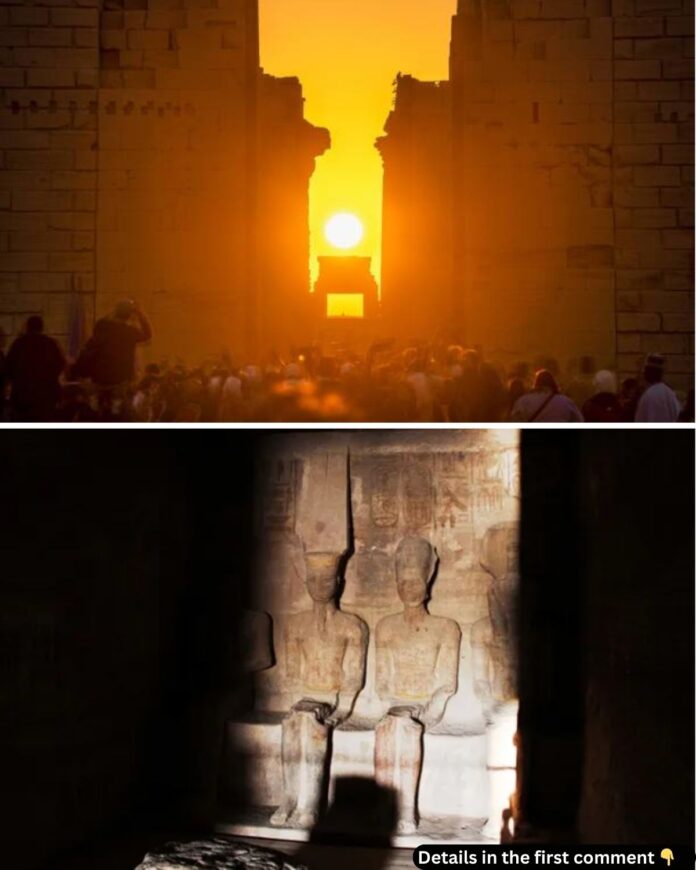Ancient Egypt, a land of architectural grandeur and celestial mysteries, was deeply rooted in the cycles of the sun. Among these cycles, the Winter Solstice held profound significance, marking the rebirth of the sun after its longest absence. This celestial event shaped not only the architecture of Egyptian temples but also their religious beliefs and rituals. Exploring the Winter Solstice in Ancient Egypt reveals a remarkable blend of astronomy, mythology, and spirituality that continues to inspire awe.
The Winter Solstice: A Turning Point in the Solar Cycle
The Winter Solstice, occurring around December 21st, is the shortest day and longest night of the year. For the ancient Egyptians, the solstice was more than just an astronomical event—it symbolized the sun’s “rebirth,” echoing the eternal cycle of life, death, and renewal. This event was intricately linked to their agricultural calendar, as the sun’s return signaled the promise of longer days and the revitalization of crops.
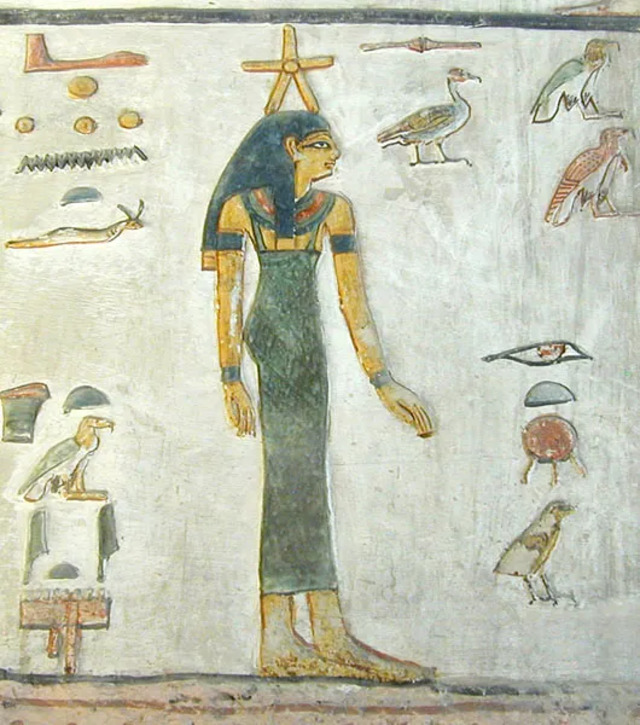
Beyond its practical significance, the solstice carried spiritual meaning. It represented the victory of light over darkness, resonating deeply within Egyptian mythology. The sun’s rebirth after the solstice was mirrored in their religious narratives, such as Ra’s daily journey through the underworld and his triumphant return at dawn.
Video
Watch as the winter solstice sun aligns with the ancient Luxor temple in Egypt – explore the video to discover the incredible precision of this celestial phenomenon and its connection to ancient Egyptian beliefs!
Solar Alignments in Egyptian Temples
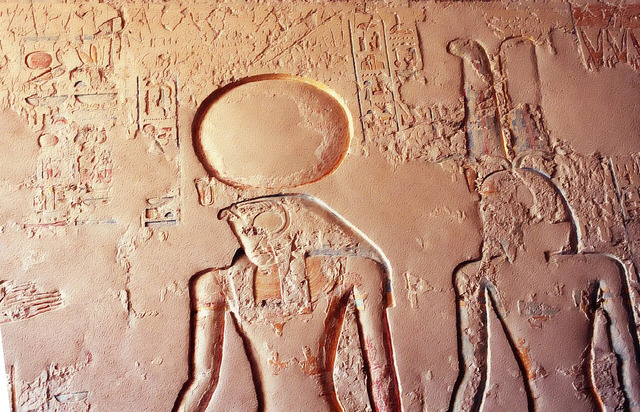
The Egyptians’ advanced knowledge of celestial movements is evident in their temple architecture, many of which align perfectly with the sun during solstices. Temples served as bridges between the heavens and earth, designed to harness the power of the sun and its divine energy.
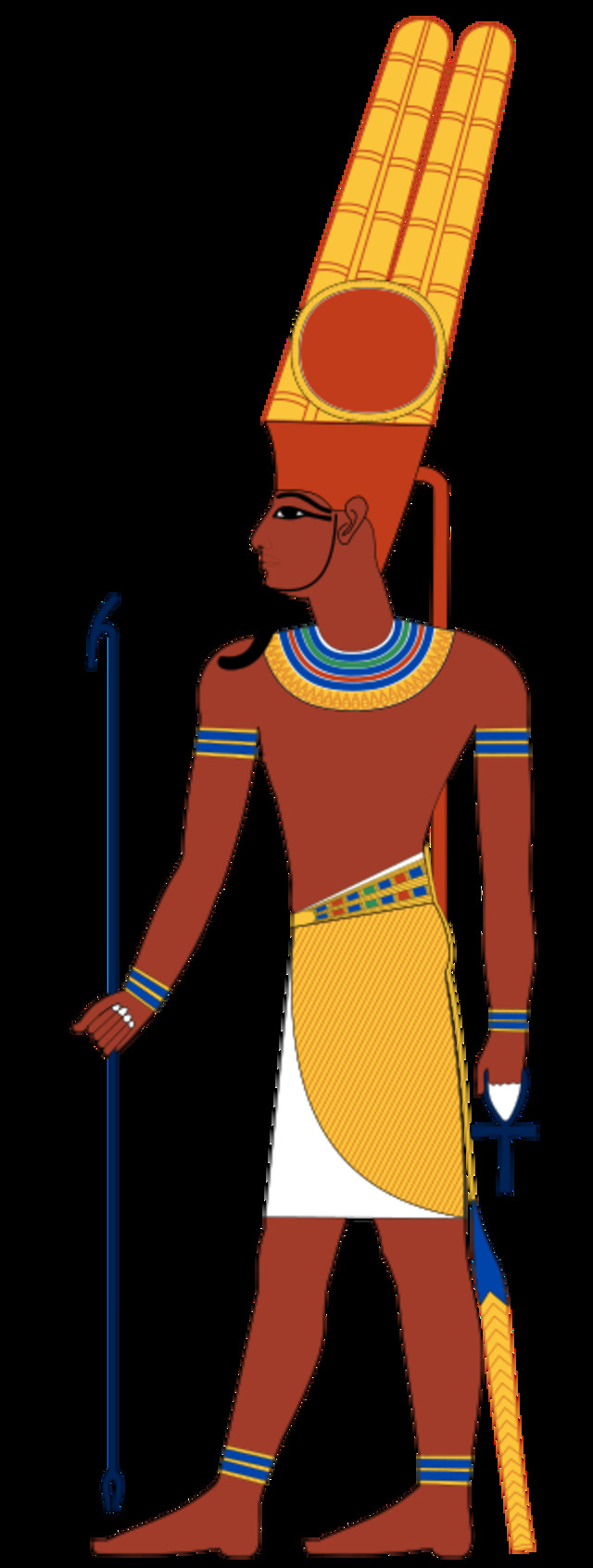
One of the most notable examples is the Karnak Temple in Thebes. During the Winter Solstice, the sunrise aligns with the temple’s axis, illuminating the shrine of Amun-Ra, the sun god. This phenomenon likely symbolized Ra’s triumph over darkness and his journey toward renewal. The precise alignment showcases the Egyptians’ mastery of astronomy and their devotion to the sun’s power.
Another stunning example is the Temple of Hatshepsut at Deir el-Bahari, where sunlight penetrates the sanctuary, illuminating sacred altars. This design reflects Hatshepsut’s claim to divine lineage, as the daughter of Amun-Ra, and emphasizes the role of the sun in legitimizing her reign.
The Sun Gods: Amun, Ra, and Khepri
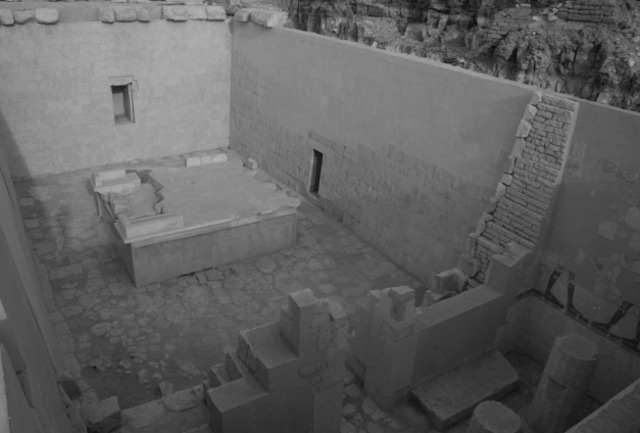
Central to Egyptian sun worship were the deities Amun, Ra, and Khepri, each representing different aspects of the sun’s cycle.
- Amun, originally a local deity of Thebes, was associated with air and creation. His name, meaning “the hidden one,” reflected his mysterious nature.
- Ra, the sun god, symbolized life and creation. Depicted with a falcon head crowned with a sun disk, he was considered the father of all gods and the world itself.
- Khepri, often represented as a scarab beetle, embodied the morning sun and the concept of rebirth. The scarab’s habit of rolling dung into a ball was likened to the sun’s journey across the sky.
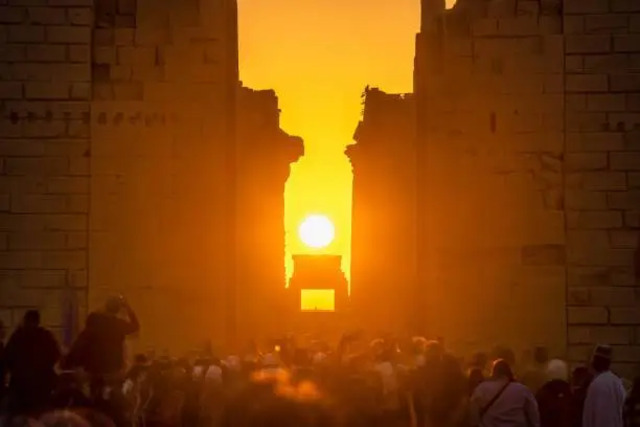
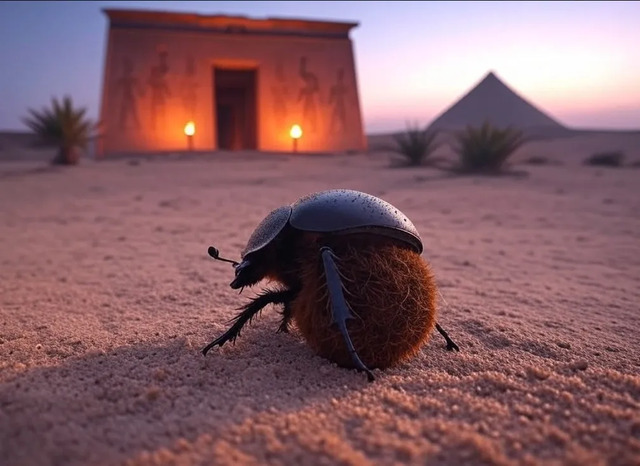
The merging of Amun and Ra during the Middle Kingdom led to the creation of Amun-Ra, the “king of the gods.” This syncretism combined Amun’s invisible creative force with Ra’s visible solar power, solidifying their central role in Egyptian theology. Khepri, as the rising sun, symbolized the daily renewal of life and was often depicted pushing the sun disc, emphasizing the cyclical nature of existence.
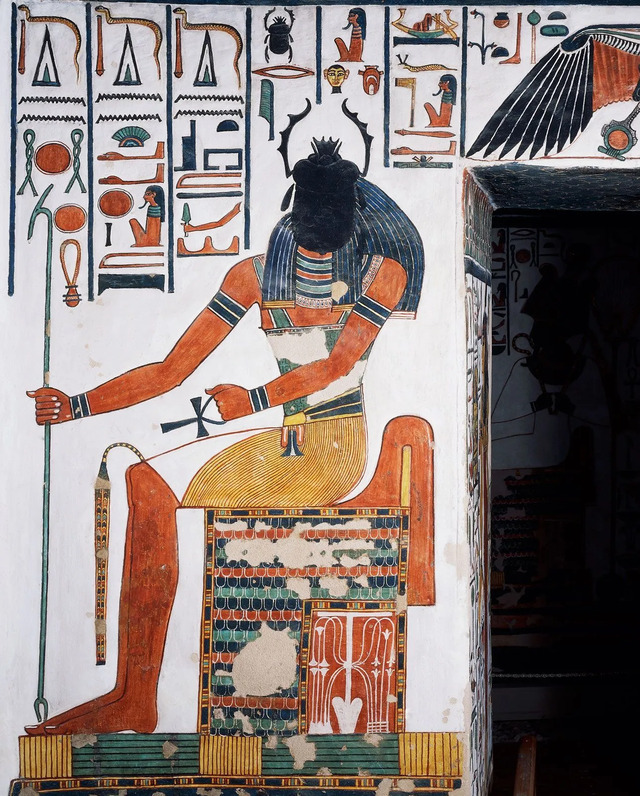
Daily Life and Rituals Around the Sun
The sun was not only a cosmic entity but also a deeply personal presence in the lives of ancient Egyptians. Solar deities were honored through daily rituals, offerings, and amulets.
Amulets, particularly scarab-shaped ones, were popular symbols of Khepri’s transformative power. These were placed with mummies to aid in resurrection, reflecting the belief in the sun’s role in the afterlife. Offerings of food, beer, and incense were made to solar gods, ensuring their favor and protection.
Magic and symbolism also played a significant role. Sacred tools and inscriptions often featured solar imagery, reinforcing the connection between daily life and celestial events. The sun’s journey was seen as a divine narrative, influencing every aspect of existence from birth to death and beyond.
Akhenaten’s Revolution: Aten Worship
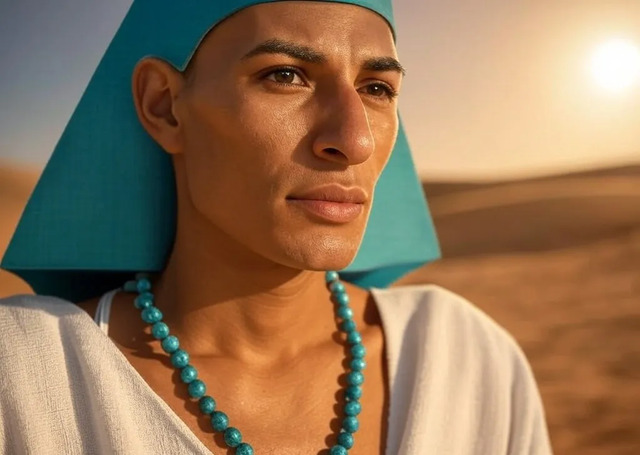
A unique chapter in Egypt’s solar history was the reign of Akhenaten, who elevated the sun disk Aten to the status of the supreme deity. This religious revolution focused on Aten as the sole creator and life-giver, marking a departure from traditional polytheism.
The city of Akhetaten, now known as Amarna, was designed to align with the sun’s path. Temples dedicated to Aten were open-air structures, allowing sunlight to bathe the grounds continuously. This design symbolized Aten’s omnipresence and reinforced Akhenaten’s role as the intermediary between the divine and humanity.
While Akhenaten’s focus was on daily sun worship rather than specific events like solstices, the underlying themes of renewal and divine power resonated with traditional solar beliefs. His reign highlighted the enduring connection between the sun and Egyptian spirituality.
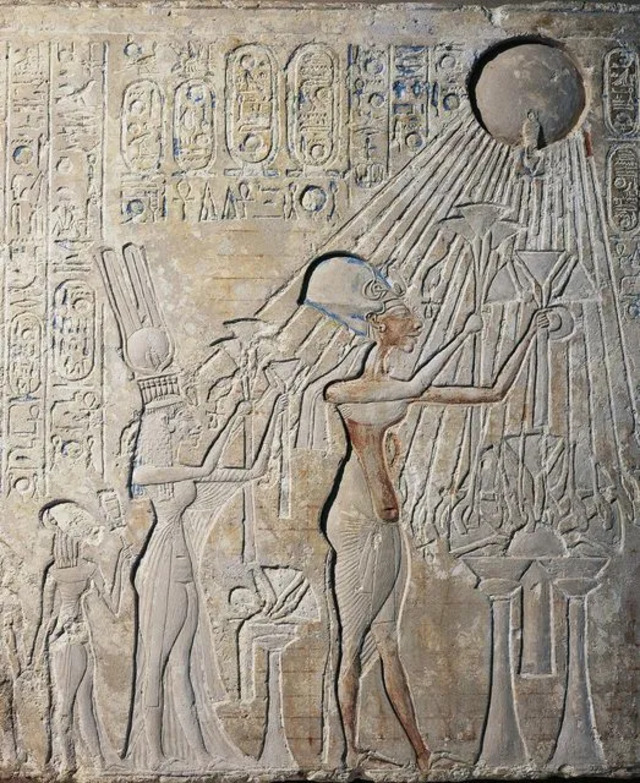
The Winter Solstice and Egyptian Spirituality
The Winter Solstice encapsulated the essence of Egyptian spirituality: the cyclical nature of life, death, and rebirth. It paralleled myths like Ra’s journey through the underworld, where he battled chaos to bring light and life to the world each day.
The solstice’s symbolism extended to the afterlife. Just as the sun was reborn after the longest night, so too were souls believed to be reborn in the afterlife. This belief was reinforced through rituals, amulets, and temple alignments, creating a profound connection between the physical and spiritual worlds.
Legacy of Solar Worship in Egyptian Architecture
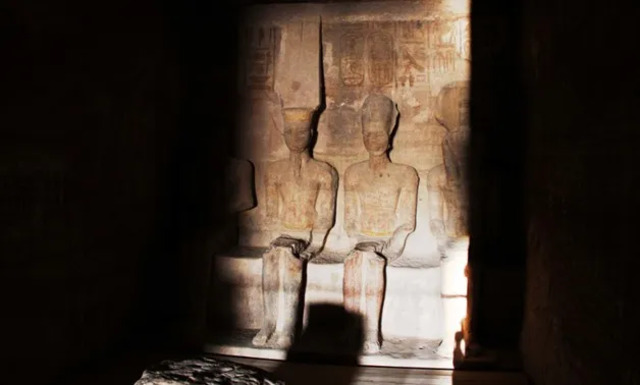
The legacy of solar worship is immortalized in Egypt’s monumental architecture. Temples like Karnak and Abu Simbel stand as testaments to their astronomical expertise and religious devotion. The solar alignments of these structures continue to captivate modern observers, offering glimpses into the sophisticated minds of the ancient builders.
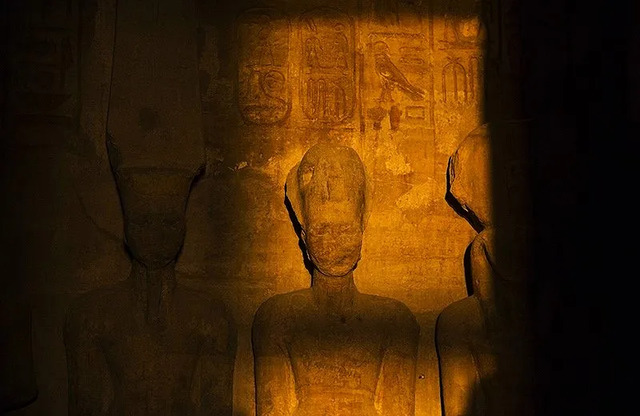
The Abu Simbel Temple, for instance, features a twice-yearly solar phenomenon where sunlight illuminates the statues of Ra-Horakhty, Amun-Ra, and a deified Ramesses II, leaving Ptah, associated with the underworld, in shadow. This alignment reflects the Egyptians’ intricate understanding of the sun’s movements and its integration into their religious and political narratives.
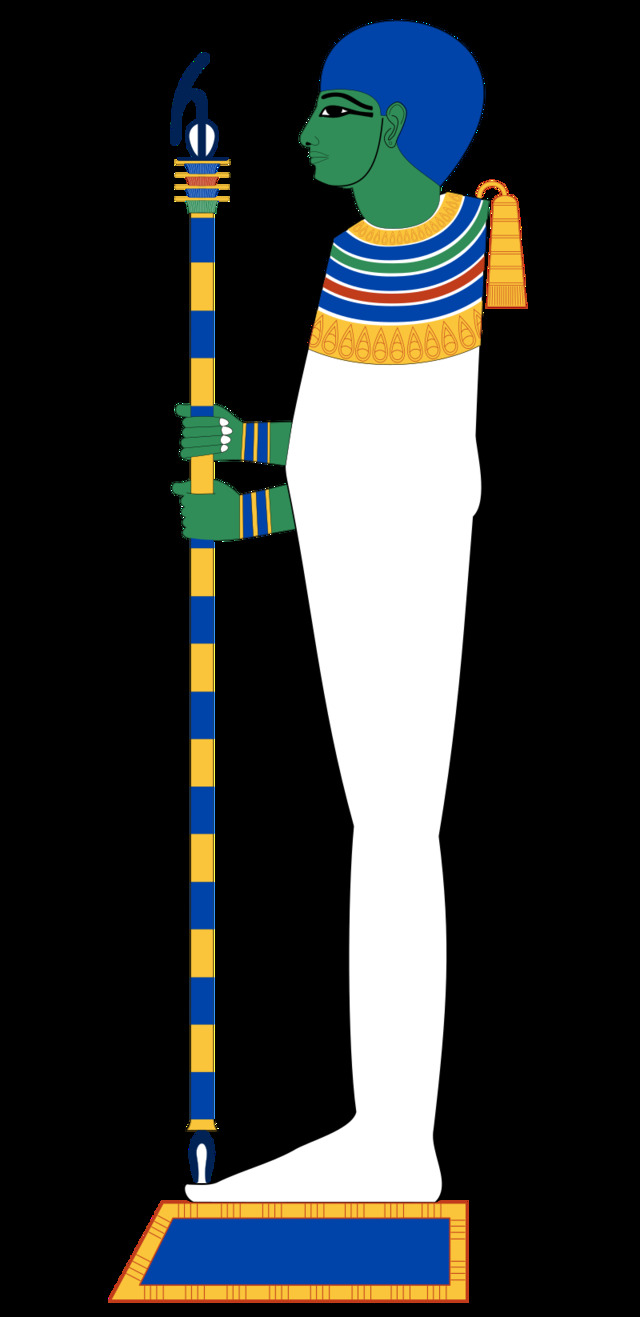
Conclusion
The Winter Solstice in Ancient Egypt was more than an astronomical event; it was a celebration of the sun’s life-giving power and its role in the eternal cycle of existence. Through their temples, myths, and rituals, the Egyptians honored the sun as a source of creation, renewal, and divine connection.
Today, the architectural and spiritual marvels they left behind serve as enduring reminders of their profound understanding of the cosmos and its influence on human life. The Winter Solstice stands as a symbol of their ingenuity, faith, and reverence for the celestial forces that shaped their world.
